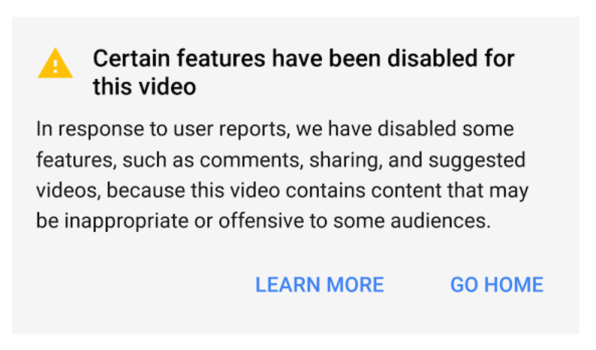 Again, YouTube?
Again, YouTube?
It’s been over a year since YouTube and their parent company Google felt the wrath of their corporate sponsors. Big name advertisers starting yanking their YouTube ads in droves after their ads appeared alongside racist, homophobic or otherwise hateful videos.
Google promised to do something about it by changing their algorithms … things settled back down and we all got distracted by other things.
Until now.
Last week CNN reported that YouTube recently ran ads from hundreds of big name brands – Under Armour, Amazon, Hilton, LinkedIn and the list goes on – on extremist channels. Again.
“The investigation by CNN reported that the ads ran on YouTube channels that promoted white nationalists, Nazis, paedophilia and North Korean propaganda,” writes Emily Tan in Campaign.
Google gave a pretty lame answer to the investigation, saying “even when videos meet our advertiser-friendly guidelines, not all videos will be appropriate for all brands. But we are committed to working with our advertisers and getting this right.”
And it wasn’t just brands that got caught up in this fiasco; ads from U.S. government organizations were also found on these damaging sites.
“US tax dollars may have gone to the channels, too,” notes the CNN article. “Ads from five US government agencies, such as the Department of Transportation and Centers for Disease Control, appeared on the channels.”
The crux of the issue is whether platforms like YouTube are simply the “pipe,” or if they have some responsibility to monitor the quality of what’s being delivered through it.
When the scandal broke last spring, Google lost millions in ad revenue and saw a short-lived downgrade of their stock. But realistically, this is a drop in the bucket in the larger revenue scheme of the mega-company. And brands, while outraged, were lulled into thinking everything was fixed.
Procter & Gamble, one of the big names to boycott YouTube last year, recently announced they were coming back, having created their own white list of channels that will be allowed to run their ads. So, still programmatic, but at least self-directed enough to ensure (hopefully) their brand integrity.
Maybe what Google needs to do is make it much easier for any brand to create its own white list. It would ease the brand safety issue, and could also incentivize channel owners to post quality video journalism instead of sensationalistic rot – in much the same way print media does.
For brands, a trusted, solid brand is indispensable. If digital platforms cannot assure brands that their reputations will remain intact, they don’t deserve our business. Many of us in the print industry (self-included) believe that last year marked a real turning point in the prevailing attitudes toward digital advertising, as senior marketers realized the underlying problems with digital advertising.
More than ever now, we need to face the bitter truths about ad tech and insist on accountability from third-party platforms. We need to know where our ad dollars are being spent, and not risk our brand reputations through unsavory associations. We need to stand up to the 99% duopoly and control our own distribution destiny.
We predicted last year would be a big wake-up call to many marketers. Unfortunately, it looks like they’ve dropped the ball and gotten complacent.

July 22, 2020, 8:17 am
July 22, 2020, 8:57 am
July 23, 2020, 3:14 am
August 13, 2020, 1:29 pm